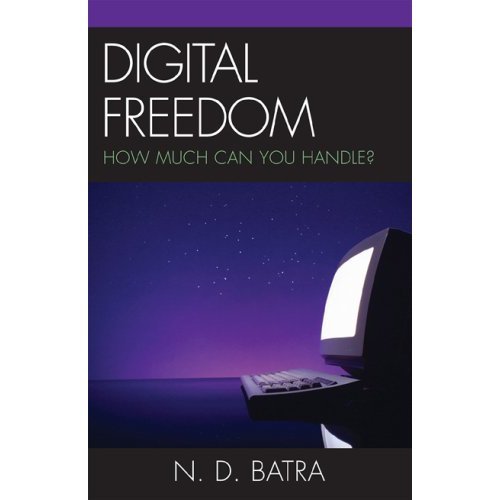Challenge of wirelessly mobile masses
From The Statesman
India’s phenomenal growth in cell phone users, now totaling to 166 million, will have tremendous political and cultural repercussions. Last year 67 million new users were added and by the year 2010, at this rate of growth, India will have more than 400 million cell phone users. Cell phones are not just for calling.
While we become used to picture taking, web surfing and photo and music sharing on cell phones, we should look forward to newer uses of the tiny handheld: live television broadcast, credit card purchases for airline tickets, and ID for security checks and data access. With the spread of WiFi hotspots and ability to roam wirelessly, cell phones will become, for some of us, better than (hmm!) our better-halves. Most of all cell phones will be used as a tool for mass political actions.
On 20 January, 2001, President Joseph Estrada of the Philippines became the first head of a state that lost power to a digitally smart mob in Manila, a million of them who used cell phones to exchange text messages and swarmed like bees for a peaceful demonstration at Epifanio de Santas Avenue (EDSA). The message was: GO 2EDSA, Wear black. It was impossible for Estrada to hold on to power in the face of the people’s mobile power. Whether that would happen in China or not is a matter of speculation. But the 2008 Summer Olympics is upon us and anything could happen.
Different cultures use the same technology differently. Koreans and Japanese use their cells for text messaging. Americans love to talk and listen to music. Music mobility is big in the United States and before long cell phones and mobile music devices would converge. Let’s see how Indian culture assimilates cell phones now that the technology is penetrating even rural areas. Millions of Indians cell users cannot chat idly all the time.
They will make money, they will change minds, and they will change the government. I wonder whether we would become more responsive to the human condition if we are able to surf the Web through wearable computers, eyeglasses or do instant messaging through picture cell phones. But there is no denying the fact that as wireless computer chips get embedded into various devices, communication ecology would change, so would society.
Wireless networks are collapsing space and time, turning Indian geographic space into cyberspace, and are bringing people together through digital presence for collaboration in the workplace and cultural space. The experience of the presence of others in a virtual environment created by networked communication is a new social experience for many. Virtual presence could become active political presence, as it might happen during the Beijing Summer Olympics. Terrorist networks too could organize virtually to strike anywhere. Every human activity from a child’s laughter to the most complex mathematical hypothesis is nothing but information in the binary format. Every human activity that takes place in an analogue world can be turned into digital data, and can instantly be distributed globally through computer networks, thus extending the reach of human communication.
Digital data can not only be stored and retrieved instantly anywhere but they can also be transformed into predictive intelligence about human behaviour regarding commerce, national security or any other social or political activity. Books, music files, love bugs or terrorist messages, for example, become indistinguishable as they converge in a digital stream and surge through cyberspace.
Convergence, instantaneity and feedback interactivity make the Internet the most powerful medium of communication ever developed. Since the traditional media including books, television, newspapers, magazines, radio, music and interpersonal communication are converging on the Internet as a multimedia stream into which anyone can plug in, their power increases manifold and in ways whose implications we still don’t understand. Outsourcing, for example, has given India a constant state of virtual presence in the American corporate discourse (Read the latest Wall Street Journal report, “Getting China and India Right”).
Unlike the offshoring of manufacturing, outsourcing of research and development and other forms of intellectual and professional work is bringing India, the European Union and the United states into a virtual world where brain power and creativity are shared and enhanced. The Internet thus is revolutionary in the sense that it is lowering barriers for cooperative co-existence of cultures.
Cultures prosper when they share boundaries, interpenetrate and cooperate with each other. Computer networks and the Internet have altered our view of space and time.
A networked organisation or an individual with instant messaging and e-mail has different feel of space and time than the people of the pre-digital era.
Cell phone is the new door to cyberspace; and once you are there, you are simultaneously in a synchronous and asynchronous world, a world that gives a greater illusion of freedom and control than the real world.
Today cyberspace has become a multi-dimensional virtual universe in which activities are as real as they are in physical space. With the rise of mobile digital power in India we will see the emergence of collective brainpower to solve complex problems. As more and more people experience activities in cyberspace through wireless presence, they will see that what is local is becoming global.
(ND Batra is the author of Digital Freedom: How Much Can You Handle? forthcoming from Rowman and Littlefield. He is working on a new book: This is the American Way)
Wednesday, May 02, 2007
March of wirelessly mobile masses
at Wednesday, May 02, 2007 Posted by Narain D. Batra
Topics
Technology
![]()
Subscribe to:
Post Comments (Atom)

No comments:
Post a Comment